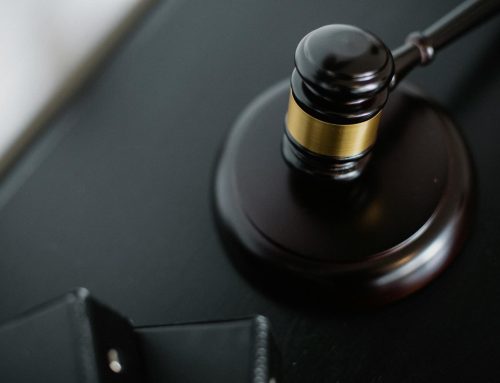Robert G. Chadwick, Jr.
Managing Member, Seltzer, Chadwick, Soefje & Ladik, PLLCRobert Chadwick is a Managing Member of the law firm of Seltzer, Chadwick, Soefje & Ladik, PLLC. He has more than 36 years of experience representing management, fiduciaries and professionals in the areas of labor and employment law, ERISA investigations and litigation, and professional liability. He is Board Certified in Labor & Employment Law by the Texas Board of Legal Specialization.
You are at a stop light on a street corner and you see out of the corner of your eye a panhandler by the side of the road. Before you know it, and before you even think about what you’re doing, you look down at your car door locks. Your brain has just made an association – panhandler = danger of theft. You may even wonder afterwards, why did I just do that?
The answer is unconscious bias, also known as implicit or cognitive bias. Simply stated, the human brain is wired to take mental shortcuts based upon past experiences and background. This mental shortcut occurs automatically as a result of the brain’s effort to simplify information and attitudes. The reason you checked the door locks was a shortcut based upon your experience and background which caused you to act instinctively.
The foregoing scenario is seemingly benign, but unconscious bias affects all of our decisions, even important ones. Research shows unconscious bias can impact (1) a physician’s diagnosis of a patient and recommended course of treatment, (2) a lawyer’s representation of a client, (3) an officer or director’s decision-making as to the future of a company, (4) a broker’s interaction with a client, and (5) an employer’s decision as to a job candidate or employee.
Unconscious Bias is Real
To be sure, there are critics who argue unconscious bias is nothing more than a myth based on junk science. Harvard, however, maintains that more twenty years of research proves the phenomenon to be real:
“… psychological research routinely exposes counter-intentional, unconscious biases. The prevalence of these biases suggests that even the most well-meaning person unwittingly allows unconscious thoughts and feelings to influence seemingly objective decisions. …
Mahzarin Banaji, Max H. Bazerman, and Dolly Chugh (2003), “How (Un)ethical Are You?”, Harvard Business Review 81, No. 12, 56.
More importantly, the courts agree the phenomenon is real. In U.S. v. Stephens, 421 F.3d 503, 515 (7th Cir. 2005), the Seventh Circuit stated: “Unfortunately … unconscious bias is not limited to one area of society … the evidence of continued racial stereotyping in employment, housing, insurance and many other areas makes that apparent.”
In the final analysis, the naysayers can question the science all they want. If the courts say unconscious bias is real, that is reason enough for professionals to pay attention.
Unconscious Bias is Often At Odds With Self-Perception
So, can a person truly hold a bias (positive or negative) toward a group of people but be totally unaware he or she holds that bias? As the Harvard researchers have explained, the answer to this question is an unqualified “yes””:
“Most of us believe that we are ethical and unbiased. We imagine we’re good decision makers, able to objectively …reach a fair and rational conclusion that’s in our, and our organization’s, best interests. But more than two decades of research confirms that, in reality, most of us fall woefully short of our inflated self-perception.”
See Mahzarin Banaji, Max H. Bazerman, and Dolly Chugh, supra at 56.
The courts too have come to understand the dichotomy between self-perception and implicit bias. As recognized in Justice Donald’s opinion in U.S. v. Robinson, 872 F.3d 760, 785 (6th Cir. 2017):
“Perhaps the most disturbing aspect of implicit bias is that it operates outside of a person’s conscious intent. Such biases often conflict with one’s consciously-held, egalitarian values, and indeed are more predictive of our conduct than are those explicitly-held values.”
Unconscious Bias Often Leads to Incorrect Conclusions
So, what is wrong with mental shortcuts? Since they are based upon past experiences, rather than existing circumstances, they can be based upon inaccurate or incomplete information. Predictably, mental shortcuts are often wrong.
As observed by the Harvard researchers:
“Early on, we learn to associate things that commonly go together and expect them to inevitably co-exist: thunder and rain, for instance, or gray hair and old age. … But, of course, our associations only reflect approximations of the truth; they are rarely applicable to every encounter. Rain doesn’t always accompany thunder, and the young can also go gray. Nonetheless, because we automatically make such associations to help us organize our world, we grow to trust them, and they can blind us to those instances in which the associations are not accurate-when they don’t align with our expectations.”
See Mahzarin Banaji, Max H. Bazerman, and Dolly Chugh, supra at 58.
Mental shortcuts are thus inherently untrustworthy. When allowed to influence important decision-making, the results can be detrimental to professionals.
Unconscious Bias Often Leads to Negligent Decisions
One detrimental result of implicit bias is negligent decision-making which risks a malpractice claim. Research shows unconscious bias can get in the way of even a well-intended professional’s gathering and assessment of information.
One systematic review studied the impact of cognitive bias on healthcare delivery based upon the following characteristics: “race/ethnicity, gender, socio-economic status (SES), age, mental illness, weight, having AIDS, brain injured patients perceived to have contributed to their injury, intravenous drug users, disability, and social circumstances.” FitzGerald C, Hurst S. Implicit bias in healthcare professionals: a systematic review. BMC Med Ethics 2017; 18. The study found that “some evidence of bias was evident either in the diagnosis, the treatment recommendations, the number of questions asked on the patient, the number of tests ordered, or other responses indicating bias against the patient.” Id.
Several studies have also shown African Americans with depression are more likely to be misdiagnosed with schizophrenia than white Americans. Stephen Strakowski, acting senior associate dean of research and psychiatry professor at the University of Texas at Austin, posits the hypothesis that implicit racial bias is to blame for the disparity.
According to Mark Graber, chief medical officer of the Society to Improve Diagnosis in Medicine, moreover, patients with mental illness are also affected by implicit bias. He says physicians often neglect physical ailments when diagnosing and treating mental health problems.
Unconscious Bias Often Leads to Discriminatory Decisions
Another detrimental consequence of implicit bias is decision-making based on unlawful criteria, thereby risking discrimination claims. Courts have long recognized that making employment decisions based on unconscious bias of which they may or may not be entirely aware can be unlawful.
In Thomas v. Eastman Kodak Co., 183 F.3d 38, 42 (1st Cir. 1999), a race discrimination suit under Title VII of the Civil Rights Act of 1964, the First Circuit observed: “Title VII’s prohibition against ‘disparate treatment because of race extends both to employer acts based on conscious racial animus and to employer decisions that are based on stereotyped thinking or other forms of less conscious bias.” The court concluded that plaintiffs can indeed challenge “subjective evaluations which could easily mask covert or unconscious race discrimination.” Id. at 58.
In Price v. Waterhouse v. Hopkins, 490 U.S. 228, 250- 52 (1989), the U.S. Supreme Court recognized that stereotyping can constitute evidence of discrimination. In the specific context of sex stereotyping, the Court found an employer who acts on the basis of a belief that a woman cannot be aggressive, or that she must not be, has acted on the basis of gender. Id. at 250.
In Kimble v. Wisconsin Dept. of Workforce Development, 690 F.Supp.2d 765 (E.D.Wis. 2010), an African American male alleged he had been discriminated against because of race and gender in being denied a raise. In ruling in his favor, the court cited many of the common stereotypes regarding black males:
“… scholars have long recognized that black males are subject to distinct stereotypes. For example, some white Americans believe that black males are less intelligent than other groups, including black females. [citations omitted] As a result, black males are sometimes monitored more closely than members of other groups. [citations omitted] Other stereotypical attitudes focus on cultural styles – black men are sometimes thought to be more direct, expressive and assertive than white men, [citation omitted] and on black uncontrollability as, for example, having a bad temper [citation omitted].”
Id. at 770-71. The court then went on to cite examples of conduct by the plaintiff’s supervisor, which included avoiding contact with the plaintiff, taking little interest in the plaintiff, and being quick to blame the plaintiff and slow to recognize his achievements.
Can Unconscious Bias Be Avoided?
Since mental shortcuts are automatic, they cannot be deprogrammed from an individual. Steps can be taken, however, to minimize the influence of cognitive bias in decision-making by professionals.
The first and most important step to combating cognitive bias is education. Since 1998, the Harvard on-line Implicit-Association Test (“IAT”) has been publicly available for individuals to test their personal unconscious biases. This test has proven to be a useful tool for educating individuals as to the dichotomy between self-perception and cognitive bias. Once a professional has a better understanding of this dichotomy, a risk management strategy can then be tailored to minimize the impact of unconscious bias on decision-making and, in turn, the risk of a suit for professional malpractice or discrimination.






Leave a Reply